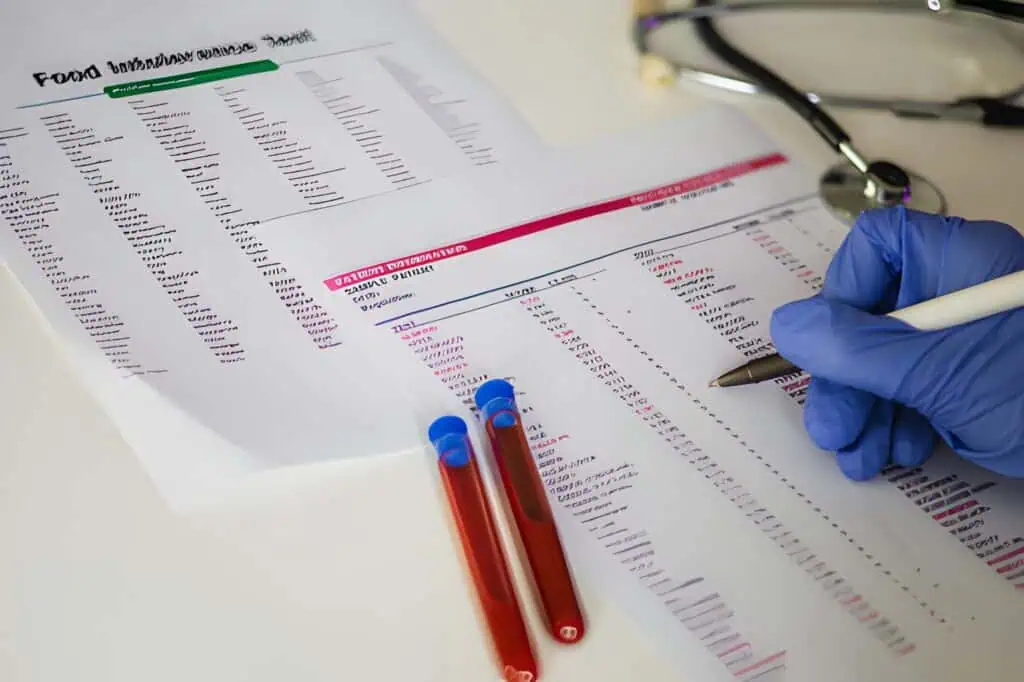Breaking down the Lab Report is more important than ever in today’s data-driven healthcare world. You’ve just had your blood drawn, and a few days later, a PDF of your results lands in your inbox, filled with acronyms, numbers, and mysterious notes that seem almost unreadable. Whether you’re a patient trying to make sense of your health data or a clinician scanning through countless reports to catch potential red flags, understanding these results is key. Interpreting lab reports accurately helps reduce anxiety, prevent medical errors, and lead to better, more informed decisions for everyone involved.
Lab reports are the unsung heroes of medicine, translating bodily fluids and tissues into quantifiable insights that guide diagnoses, treatments, and monitoring. With over 14 billion lab tests performed annually in the U.S. alone, they influence everything from routine check-ups to emergency interventions. Yet, misinterpretation remains rampant: studies show that up to 62% of lab results are overlooked by providers, contributing to diagnostic errors affecting 1 in 20 adults each year. This article dives deep into educating both providers and patients on lab reports, exploring their structure, common pitfalls, educational strategies, real-world examples, challenges, and emerging innovations. By demystifying these documents, we can foster a healthcare system where knowledge bridges the gap between data and decisions.
Understanding the Anatomy of a Lab Report

A lab report isn’t a monolithic block of text; it’s a structured document designed for clarity, though it often falls short. At the top, you’ll find patient demographics: name, age, sex, date of birth, and sometimes race or ethnicity, as these factors influence reference ranges. Next comes specimen details, collection date, time, source (e.g., blood, urine), and lab info, to ensure traceability.
The core is the results section, listing tests with values, units, and reference ranges. Results can be quantitative (numbers, like hemoglobin at 13.5 g/dL) or qualitative (positive/negative, like a pregnancy test). Flags like “H” for high or “L” for low highlight abnormalities, but context matters; a “normal” result might mask issues if trends aren’t considered. For instance, a slightly elevated creatinine might seem fine, but signal early kidney disease in serial tests.
Common panels include:
- Complete Blood Count (CBC): Measures red cells (hemoglobin 12-16 g/dL for women), white cells (4-11 x 10^9/L), and platelets (150-450 x 10^9/L). Abnormalities can indicate anemia, infection, or clotting disorders.
- Basic Metabolic Panel (BMP): Checks electrolytes (sodium 135-145 mmol/L), glucose (70-99 mg/dL fasting), and kidney markers like BUN (7-20 mg/dL) and creatinine (0.6-1.2 mg/dL).
- Comprehensive Metabolic Panel (CMP): Adds liver enzymes (ALT 7-56 U/L, AST 10-40 U/L) and proteins.
- Lipid Panel: Total cholesterol (<200 mg/dL), HDL (>60 mg/dL), LDL (<100 mg/dL), triglycerides (<150 mg/dL).
- Thyroid Panel: TSH (0.4-4.0 mIU/L), free T4 (0.8-1.8 ng/dL).
Pathology reports for biopsies add descriptions of tissue architecture, often with IHC markers for cancers. Notes or interpretations from pathologists provide context, like “consistent with inflammation.”
Reference ranges are population-based (typically 95% of healthy individuals), varying by lab, age, or pregnancy. Misreading them, e.g., ignoring sex-specific norms, leads to errors.
Common Pitfalls in Lab Report Interpretation
Errors in lab reports span pre-analytical (46-68% of total), analytical (7-13%), and post-analytical phases (18-47%). Pre-analytical mistakes include improper fasting (skewing glucose) or hemolysis (falsely elevating potassium). Analytical errors involve equipment glitches, while post-analytical ones, like transcription mistakes, affect 5-10% of reports, leading to harm.
For providers, the top mistakes include:
- Overlooking Trends: A single normal PSA might hide prostate cancer if rising over time.
- Reference Range Rigidity: Not adjusting for patient factors, like lower hemoglobin in the elderly.
- False Positives/Negatives: Low-prevalence tests yield more false positives; e.g., a 95% accurate test for a 1% disease has 83% false positives.
- Test Naming Confusion: Ambiguous acronyms derail ordering; one study found providers struggling with 20% of test names.
Patients often misinterpret “abnormal” as dire, causing anxiety, or ignore flags due to jargon. A 2025 survey revealed 40% of patients don’t understand reference ranges, leading to non-adherence.

Strategies for Educating Healthcare Providers
Providers need ongoing education to navigate lab complexities. In 2025, resources like the Real World NP’s Lab Interpretation Crash Course offer self-paced modules on CBC, BMP, and pearls like distinguishing viral vs. bacterial infections via WBC differentials.
AI tools are game-changers: Stanford’s 2025 AI assistant drafts patient explanations for results, reducing admin time by 30%. Fullscript’s AI interprets labs for personalized care, flagging interactions. CDC’s Core Elements of Hospital Diagnostic Excellence emphasize multidisciplinary reviews to catch errors.
Workshops focus on pitfalls: FHEA’s guide highlights avoiding over-reliance on single values. CLIA updates in 2025 mandate better proficiency testing, ensuring accurate interpretations. Simulation training, using mock reports, builds skills in spotting hemolysis artifacts.
Empowering Patients Through Education

Patients deserve accessible info. MedlinePlus’s 2025 guide explains results with visuals, like color-coded ranges. Testing.com deciphers reports, advising discussions with providers.
Apps like Hathr AI simplify jargon, using chatbots for queries. Patient portals integrate explanations; Kaiser Permanente’s encyclopedia links results to plain-language articles.
Visual formats help: Graphs showing trends reduce confusion by 50% in studies. LGI Hospitals’ guide breaks down blood, thyroid reports with step-by-step visuals. Tips include noting symptoms, asking about interferences (e.g., biotin skewing thyroid tests).
Case Studies: Real-World Applications
In a 2025 Stanford pilot, AI helped explain abnormal liver enzymes to a patient with fatty liver, leading to lifestyle changes and normalized ALT in months.
A nurse practitioner using the Crash Course caught a subtle B12 deficiency in an elderly patient via MCV trends, preventing neuropathy.
Patient-side: A woman misread her CA-125 as cancer-positive but, via Ada Health’s tool, learned it was benign inflammation, avoiding panic.
In a UK study, simplified reports with icons improved comprehension by 70%, reducing follow-up visits.
Challenges in Lab Report Education
Jargon persists: Terms like “eGFR” baffle 60% of patients. Providers face time constraints, interpreting 50+ reports daily. Disparities: Low-literacy groups misinterpret 2x more.
Solutions: Multilingual tools (MGMA’s 2025 interpreting trends) and standardized formats. Ethical issues: Over-sharing raw data risks self-diagnosis errors.
Advances and Future Directions in 2025
Automation tops trends: AI-driven reports with natural language summaries. Roche’s LabLeaders predicts AI optimizing 80% of interpretations. Avalon’s 2025 report highlights LIMS for clearer visuals.
By 2030, multi-omics integration will personalize ranges, with VR simulations for training. Lab Innovations 2025 showcases connected labs for real-time education.
Conclusion
Lab reports are gateways to health insights, but without education, they remain locked doors. By breaking them down, for providers through targeted training and AI, for patients via accessible tools, we reduce errors, empower decisions, and improve outcomes. In 2025’s evolving landscape, embracing these strategies isn’t optional; it’s the path to a more informed, equitable healthcare future. Whether you’re a patient or provider, the next report you read could change everything. Make sure you understand it.














